
It’s sunny and about 80 degrees out when I find a map for the Orange County Great Park. I’ve been walking around the massive Irvine landscape for the past 30 minutes, trying to take it all in, but the map holds a surprise I didn’t find in any of the websites, brochures or blog posts I read to prepare myself for this visit: “Reflecting Ponds.” The day’s getting warmer by the minute, and standing over some cool ponds sounds sublime.
According to the map, the ponds sit at the end of the “Kaiser Permanente Thrive Path” (there’s no better way to transcend your troubles than by walking on a paved walkway named for a multibillion-dollar HMO, right?). The “Path” parallels acres of soccer fields and a parking lot, and after a few minutes, I finally arrive at my destination: giant dirt holes near the intersection of Marine Way and Ridge Valley that are cordoned off. The construction workers ignore me as I snap a few photos, then walk away.
That was in June, and though the pools were actually just a few yards away, all the temporary fences and construction work had confused me and I missed them. Under development for more than a dozen years, the Great Park today is a strange place. Even now, the attractions (such as they are) are only open four days of the week, and Irvine officials have no plans to change that any time soon. Some parts of the park, such as the famous big orange balloon ride (once free, now $10 per person), are more than a decade old. But nearby, recently opened baseball fields are so freshly landscaped they smell like the Home Depot Garden Center. There are many places to sit but few spots to relax, given the fact the Great Park has virtually no shade trees (walking around the entire Great Park one day, I did find one huge, old tree, but it was fenced off and inaccessible). Many of the benches are also what Mike Davis described in City of Quartz as “bum-proof”—built with large bars in the center to prevent people from lying down on them. And when I finally did find a nice, regular bench to sit on that was partially in the shade, it was very close to the carousel (a hand-me-down from Fashion Island in Newport Beach), which at that moment was playing the Chipettes’ version of Beyoncé’s “Single Ladies.”
The Great Park is also—and this is clearly a product of its former life as a jet base—still covered in concrete and asphalt. That means the Great Park can get warm, like a stovetop. Some of this material has been cleverly reused, such as the portions that were ground up and used to shore up earthworks near the balloon ride. But in other cases, great slabs of concrete were simply left where they were, including the taxiway that’s now an immense “Historical Timeline,” complete with entries such as “1492: Christopher Columbus Crosses the Atlantic, Jews & Muslims Expelled from Spain.”
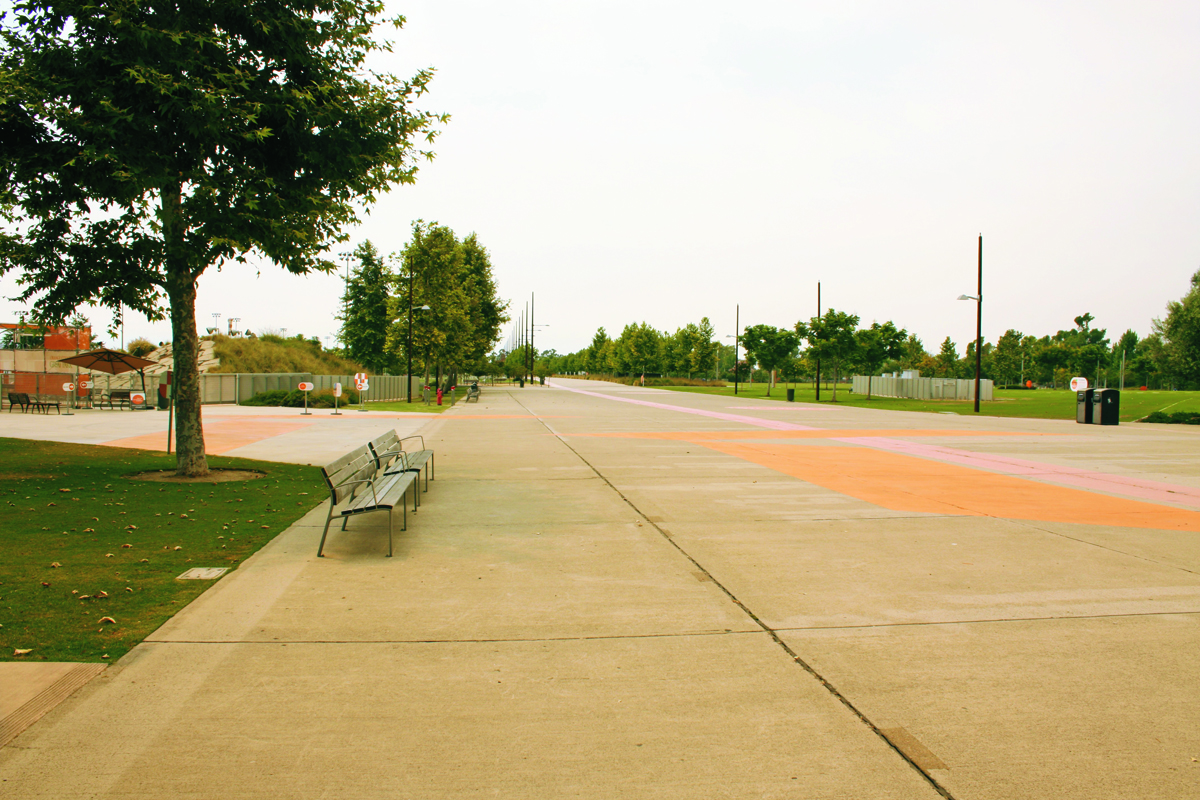
All of this makes sense when you think about the difficult way in which the Great Park has come about. Though the city of Irvine annexed the Marine Corps Air Station (MCAS) El Toro many years ago, homebuilder Lennar Corp. actually owns most of it (the company bought the base in a 2005 Department of Defense auction for nearly $650 million). Much of the park today owes its life not to Irvine planners, but to FivePoint, a development company largely funded by Lennar. As for the city, it’s almost comical now to calculate how many millions of dollars it threw down the hole known as Forde & Mollrich, all while city officials were claiming they couldn’t pay to build the park (the payments to the PR consultant finally ended in 2013).
Even today, contractors and consultants swarm over the Great Park. Irvine has its own designers as well as contract work from AECOM. FivePoint—which designed and built 688 acres of sports fields that are nearly complete—has consultants of its own. In May, the Great Park Board of Directors (which these days is made up of just Irvine City Council members) hired the consulting firm HR&A to help bring tenants into the park’s 250-acre “Cultural Terrace,” which is still being designed.
But honestly, the park—or, at least, what many of us imagined the park would be—was doomed when Lennar bought the base. Sure, the Great Park is what the 2002 Measure W mandated for the former Marine Corps base, but park can mean a lot of things. Lennar builds big, expensive homes, and that’s why it paid so much for the base.
Go up in the Great Park Balloon now, and you’ll see all the homes Lennar has been building—thousands of them, not one of which is cheaper than $600,000 (assuming you can find one for even that price). The Great Park, or rather most of what has been built so far, pretty much exists to boost the property values for the people moving into the vaunted “Great Park Neighborhoods.”
This makes sense when you look at FivePoint. Six of the eight members of its “Executive Team” are white males (and one of those is Steve Churm, who used to publish the OC Metro, which printed nothing but gospel about Orange County companies; today, Craig Reem, Churm’s former editor, is the city of Irvine’s spokesperson). This is exactly the kind of development team that would think securing a major HMO to sponsor an asphalt walkway is a world-class idea.
Sure, the Great Park has or will have many, many baseball, softball, volleyball and soccer fields—and one shiny new soccer stadium that could easily find use in a future Olympics—but given that just 25 percent of the population plays organized sports (according to a 2015 Harvard study), how much use are these fields going to get?
Of course, looking down from the balloon, there’s no question the Great Park has a certain beauty: the grid of trees in the Palm Court and the assorted arrows, angles, umbrellas and checkerboard patterns between the old hangar and the Visitor Center are laid out like some sort of Instagram art project, but I can’t say it all adds up to comfort and relaxation. The Great Park is something to behold, but it’s not really a park—a reality that has many residents so concerned they’ve spent the past year lobbying the city to build a truly lush park at the Great Park.
* * * * *
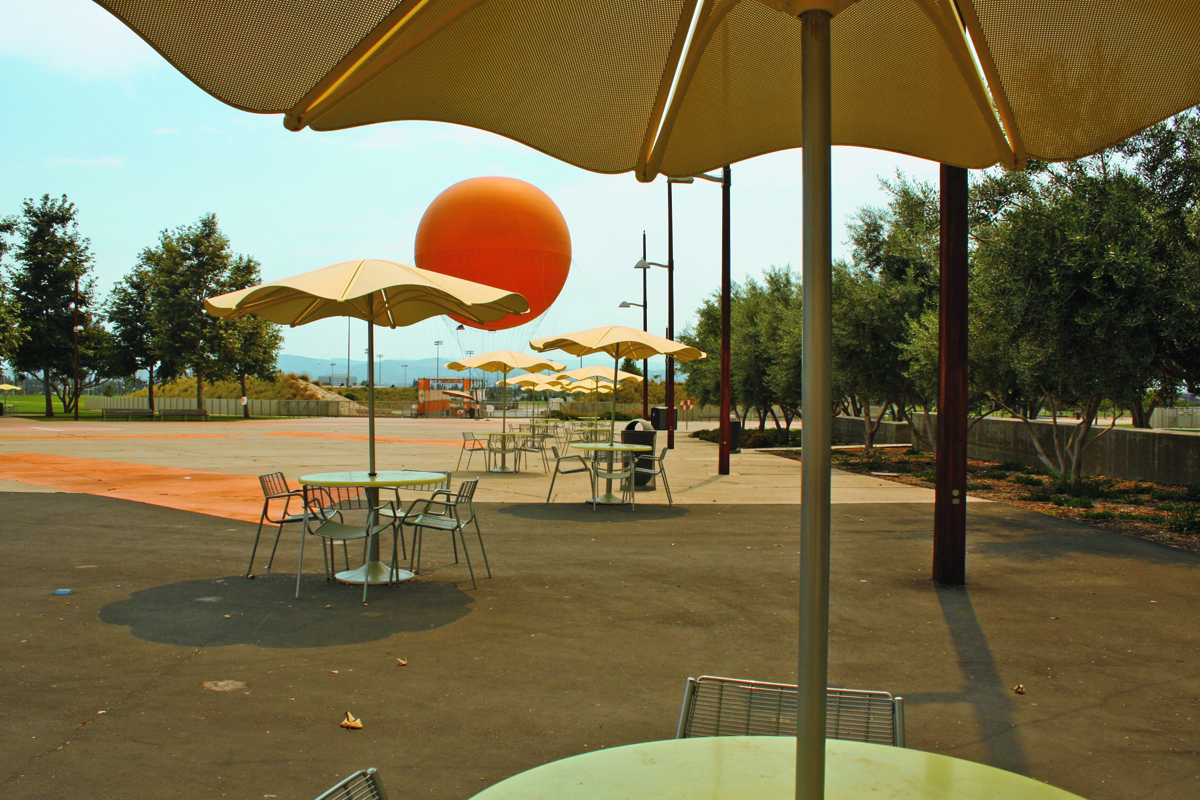
The real tragedy here is that the promise of the old MCAS El Toro—encompassing more than 5,000 acres—was breathtaking. Its 1999 closure was a chance to turn an imperial war-making fortress that had sent untold thousands of young Marines to fight and die in the Pacific, Korea, Vietnam and Persian Gulf into a place of peace and tranquility, a refuge from militarism and consumerism that would benefit the general public.
My recent visits to the Great Park took place two decades after I last set foot on the base. Back in 1998, I was a young reporter on a media tour of the MCAS El Toro. We watched aviators strut across the flight line while the metallic whine of F/A-18 Hornet fighters filled the air. Though base activity was winding down (it would close altogether the following summer), the station was still very much operational.
At that time, the county was tearing itself apart over the proposal (backed by right-wing billionaire George Argyros) to convert the base into an international airport. Look at all the South County neighborhoods that popped up over the past decade like mushrooms after a storm to see the fallacy in that idea—every new homeowner was a wealthy (or at least well-off) family with multiple cars, disposable income and an unutterable loathing of even the talk of putting a massive international airport in their back yards.
Anti-airport activists—and this paper—had a better idea. City of Irvine mailers in 2002 said its Great Park proposal would be a “true oasis” and “America’s greatest park.” Then-Mayor Larry Agran told the Weekly the park would comprise “2,800 acres.”
“It will be twice the size and every bit as beautiful as San Diego’s Balboa Park,” Agran said. “The good guys are going to win.”
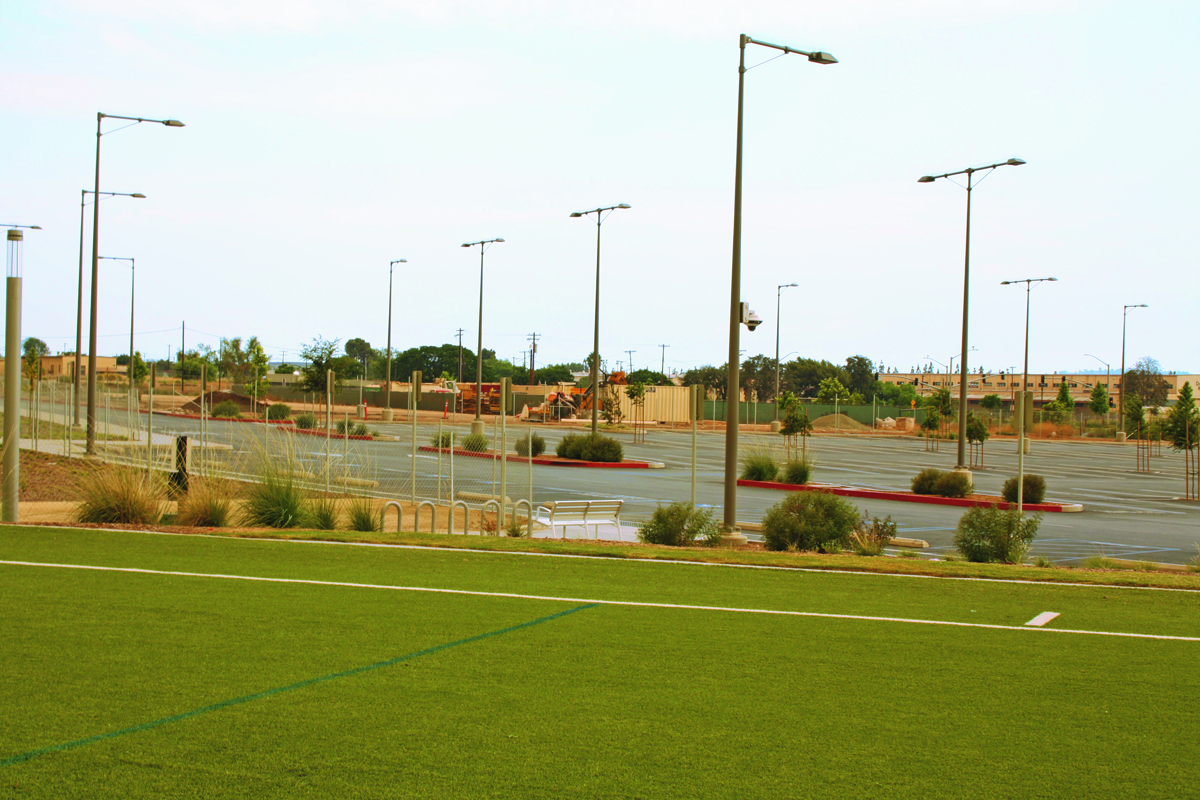
Believe me, we take no satisfaction in the fact that we called bullshit on all that back then. For us, the Great Park wasn’t just a tactic to beat back the hated and unnecessary airport—it was a chance to provide everyone in Orange County a refuge from the traffic, stress and growing misery of everyday life. It was to be beautiful, quiet and, above all, public—a place to walk, sit, reflect, or just lie on your back and watch butterflies and fluffy clouds. Even if it couldn’t make life better, the park certainly wouldn’t make it worse.
For a while, it looked as if the Great Park would be great. In 2007, the park’s board approved a master plan designed by Iowa architect Ken Smith, whose vision for the Great Park mirrored what those of us who had fought so hard for a decade earlier.
“In the heart of Orange County a new kind of park is being created, one where visitors experience a new kind of relationship between the built environment and the natural world,” stated Smith’s master plan. “As parks have long been, the Great Park is an oasis, a place of pleasure, activity and reflection. But it is much more. It is a place that connects our history and our current needs, knitting together the communities of Southern California while restoring the region’s natural heritage. It is a place where new ideas for social and environmental sustainability are investigated and tested. The citizens of Orange County are key participants in imagining these new ideas to create a healthier and more sustainable future.”
It was a wonderful thought—grass, trees, water and even a 60-foot-deep canyon that stretched across the property. But it never came to be. Though the city of Irvine approved the plan, the cost was simply seen as too high. Smith’s master plan just went away.
Hey, big, beautiful parks are expensive. They cost money, and cities today don’t have a ton to throw around on the public good. A 19th-century city such as New York could build a huge public expense such as Central Park because that’s what governments did back then—they raised taxes and spent money. But we’re in the 21st century, and that means cities are mired in crushing debt (remember, Flint, Michigan, still doesn’t have clean drinking water).
Given municipal politics in Orange County today, there’s no way the Great Park can just be a public park, anymore than the 261 toll road could be a “freeway.” Damn thing’s gotta be self-sufficient—it has to make money, which is why a giant ice rink is going in now, the ink’s drying on a new agreement with Wild Rivers for a water park, and the city just hired a new consultant to find revenue-generating tenants for the upcoming “Cultural Terrace” portion of the park, which is still being designed.
* * * * *
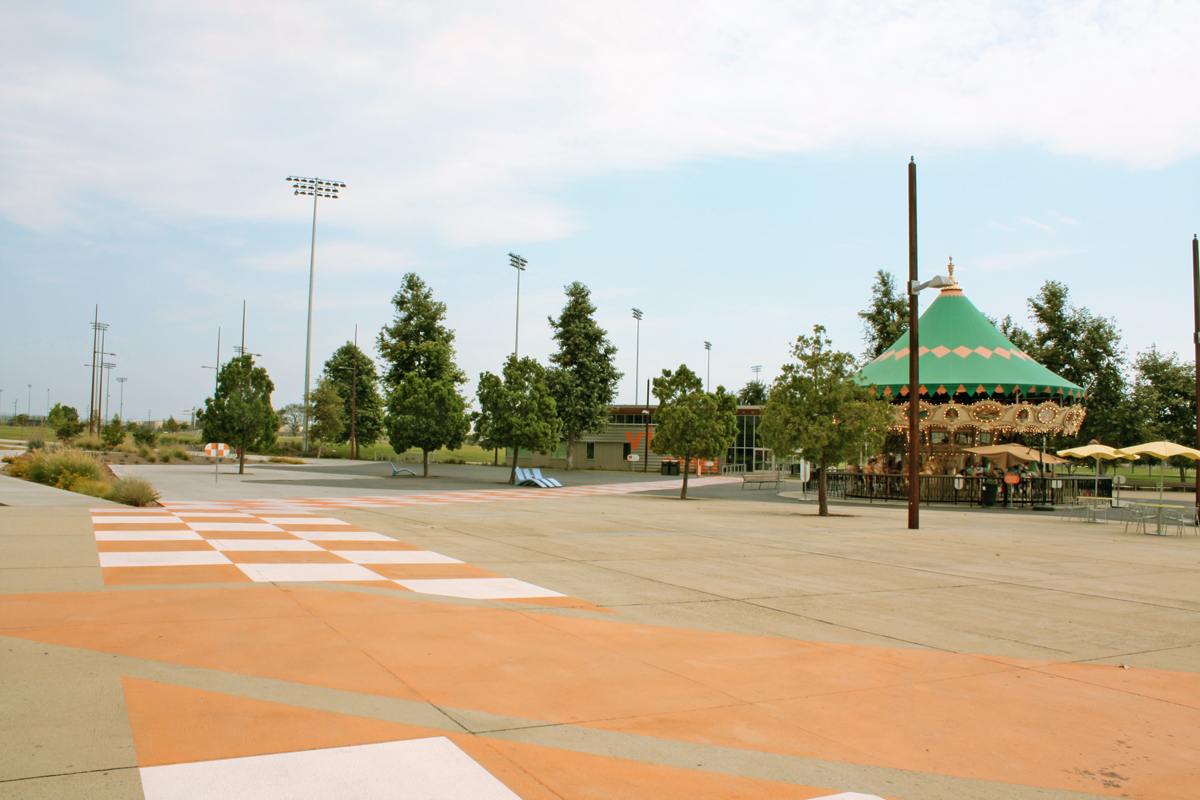
It took about 16 years to build New York’s 843-acre Central Park. If you’re generous and start from the year Lennar bought MCAS El Toro, then we’re in Year 13 now.
Remarkably, there’s still a chance Irvine might put an actual “park” in the Great Park. It’s not a sure thing, and even if successful, it won’t be big. But there’s a movement to convince the city of Irvine to add a botanical garden.
“Our organization is dedicated to saving 59 acres for a botanical garden in the Cultural Terrace,” Irvine resident Teena Spindler told me. Last year, Spindler and other Master Gardeners such as herself formed the Great Park Garden Coalition, after discovering the botanical garden they had assumed would be built at the Great Park—because it was prominently featured in Smith’s master plan—wasn’t actually part of the city’s new plans (the gardeners also run the Great Park’s 1-acre Farm + Food Lab, which is a nice place if you’re into gardening and fresh, locally produced vegetables and such).
Soon, gardeners and garden-lovers were emailing the Irvine City Council, practically begging for a tiny sliver of the Great Park. “Would you please put the 59 acres back into the development plan?” Laguna Woods resident Evelyn M. Chase-Miller asked in a May 22, 2017, email to the City Council. “We need a garden that reflects the beauty that our wonderful Southern California climate creates. . . . As our natural world disappears around us, we need to have a place to visit and take in the restfulness of a native garden/botanical garden.”
OC resident Courtney Havens agreed, writing a letter to the council the same day as Chase-Miller. “One of the things I enjoy most about visiting other cities is visiting and exploring garden spaces,” Havens wrote. “Gardens are an important part of public spaces; they allow spaces of peace in the middle of urban sprawl.”
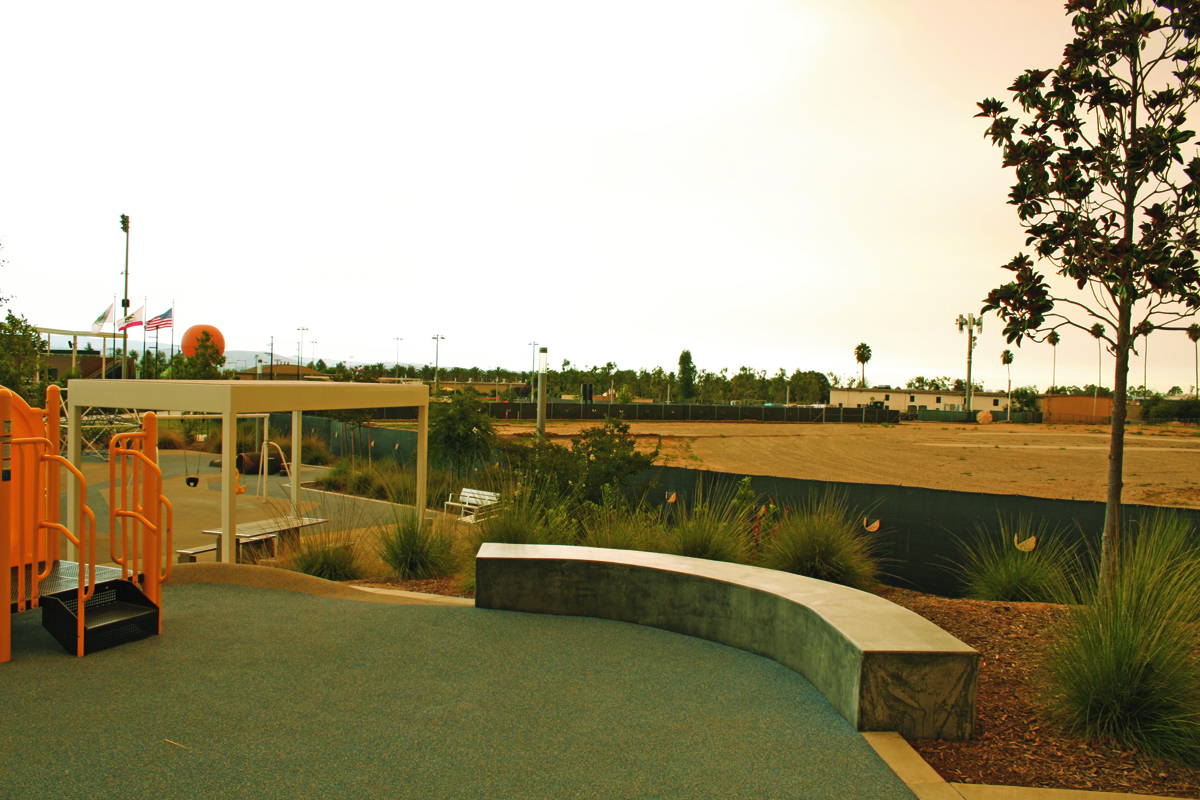
For its part, the Garden Coalition crafted its own proposal, which it submitted to the Urban Land Institute (ULI) for a possible grant. But the grant didn’t end up happening, and ULI officials didn’t respond to my request for their reasoning. In any case, the Garden Coalition plan keeps alive the old vision for the Great Park many thought had died with Smith’s master plan.
“The Great Park Botanic Garden is not your traditional botanical garden,” states the coalition’s plan. “It’s a garden for the 21st century: an ‘experiential’ garden. This garden is not a static, boring place to house plants with scientific labels; it’s a place of experiences with walking/jogging paths through native forests and wildflower meadows; a children’s garden of discovery and active learning; a place where art and music exists within and throughout the garden; where the many cultures of the residents of Orange County can be celebrated and shared through plants and design; and so much more.”
Such a garden would also be very popular with county residents, according to the city of Irvine’s own research. In fact, the city’s Great Park Planning Survey, which was submitted to the Great Park Board in May 2017, says a remarkable 82 percent of county residents are “very or somewhat interested” in the construction of botanical gardens at the park.
While all this sounds lovely, city officials haven’t yet officially agreed to it. And as to when they will decide, Irvine spokesperson Reem couldn’t say. “This is the largest parkland development in the country right now,” he said. “There’s no timetable for that. There’s an awful lot of work in other parts of the park.”
Such as the baseball fields that just opened up. Or the mile-long trails stretching from Irvine Boulevard to the soccer stadium that will open “this calendar year,” though Reem couldn’t be more specific.
In July 2017, AECOM published a report on a potential botanical garden at the Great Park. But don’t get your hopes up: The study mostly just ran the numbers on the garden’s estimated cost and projected financial benefits.
According to the AECOM report, a 59-acre botanical garden at the Great Park would cost at least $50 million to build. It would require an additional $3.6 million in annual operation costs, while bringing in just $1.8 million in annual revenues.
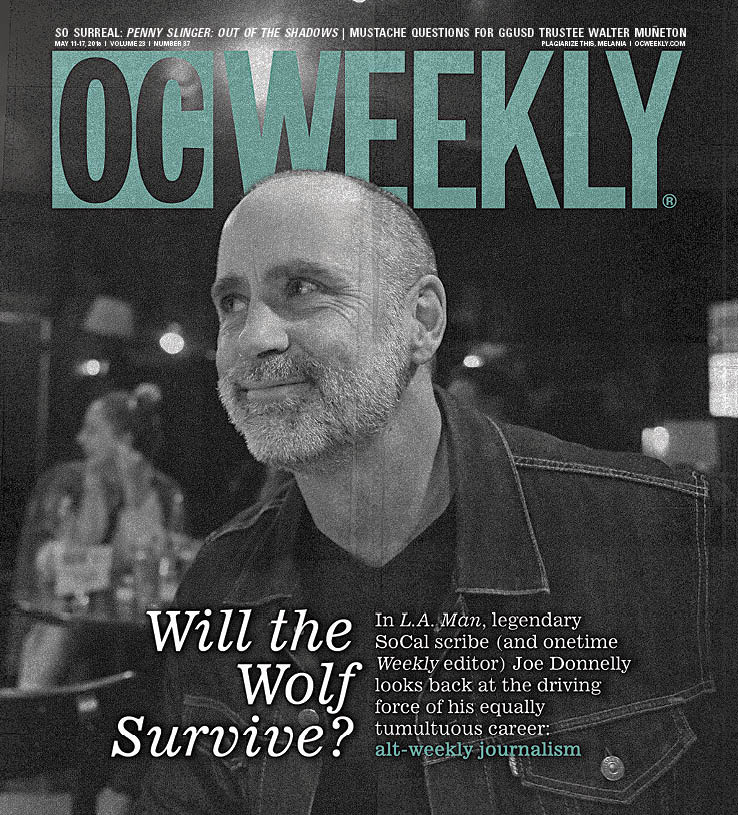
“Botanical gardens can be very successful cultural attractions that bring hundreds of thousands of visitors to a destination, provide extensive community programming and serve as event venues,” the report stated. “They are typically operated as nonprofit organizations in partnership with a public agency, and while they can generate earned revenue that covers a portion of operating costs, they also require contributed income or public subsidy on an annual basis. They also require a substantial upfront capital investment and typically require time for plantings to develop until they can grow into a full-scale visitor attraction that reaches their attendance potential.”
Hence the city is focusing on putting a golf course and Wild Rivers into the Great Park. In the meantime, at least a few city officials seem to see great value in something more lush and tranquil than a giant water slide.
For this story, I emailed all five members of the Irvine City Council, asking if they supported a botanical garden at the Great Park. No one responded. But at the May 23, 2017, Great Park board meeting, Director/City Councilwoman Christina Shea called a botanical garden “a really key component of the Cultural Terrace.”
And in a recent constituent newsletter, Great Park Director/City Councilwoman Melissa Fox said that, “I will also insist that we follow the recommendations of residents and build world-class botanical gardens, museums and a lake to make Irvine the home of a truly Great Park.”
But most heartening, on May 22, Fox pushed back on the notion that everything in the Cultural Terrace must generate a lot of revenue.
“The Cultural Terrace is the Cultural Terrace,” she told Irvine planners and consultants at the Great Park board meeting. “Not the Commercial Terrace.”
Anthony Pignataro has been a journalist since 1996. He spent a dozen years as Editor of MauiTime, the last alt weekly in Hawaii. He also wrote three trashy novels about Maui, which were published by Event Horizon Press. But he got his start at OC Weekly, and returned to the paper in 2019 as a Staff Writer.


Orange County is the only county in Southern California that does not have a Natural History museum. This despite the fact that thousands of artifacts and millions of world class fossils that were dug up “for the inspiration and benefit of present and future generations” (National Historic Preservation Act 1966).
Instead the artifacts and fossils are stored at the Cooper Center of Archaeology and Paleontology and various environmental firms and other places where they are not available to the public.
The Cultural Terrace is the perfect place for a museum complex with a Native American wing, a Natural History wing, a Orange County and military history wing, and supporting facilities. The Cultural Terrace meets the criteria for a successful museum: accessibility (train station next door), visibility (the Giant Orange), and space.
The California Cultural Resources Preservation Alliance, Inc. Museum Task Force is working together with the Great Park Garden Coalition. Every significant museum has botanical gardens.
Currently, teachers have to bus their students to Los Angeles’ Exposition Park or San Diego’s Balboa Park to learn about cultural and natural history. According to the American Association of Museums, more people visit museums than all of the sporting events across the nation. An Orange County Museum of Cultural and Natural History will make the Great Park a destination that will serve people of all ages and cultures.
Patricia Martz, Ph.D.
President